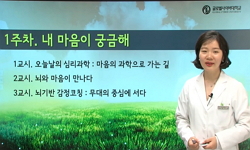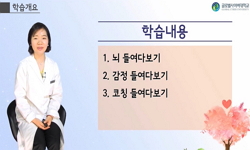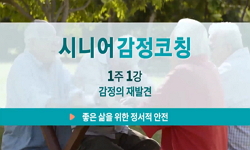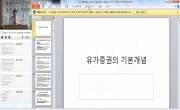순자 악론은 어떤 예술론으로 해석될 수 있는가? 필자는 순자악론에 대해 카간(Kagan) 의 예술해석론을 위주로 분석하고자 한다. 본고에서는 중국현대학자의 순자 악론을 설명 하는데,이때 카...
http://chineseinput.net/에서 pinyin(병음)방식으로 중국어를 변환할 수 있습니다.
변환된 중국어를 복사하여 사용하시면 됩니다.
- 中文 을 입력하시려면 zhongwen을 입력하시고 space를누르시면됩니다.
- 北京 을 입력하시려면 beijing을 입력하시고 space를 누르시면 됩니다.
https://www.riss.kr/link?id=A109032241
-
저자
강지연 (창원대학교)
- 발행기관
- 학술지명
- 권호사항
-
발행연도
2024
-
작성언어
Korean
-
주제어
Xunzi ; Confucianism ; Theory of Art ; Emotion ; the Record of Music ; 순자 ; 유가 ; 악론(樂論) ; 감정 ; 악기(樂記).
-
등재정보
KCI등재
-
자료형태
학술저널
- 발행기관 URL
-
수록면
23-42(20쪽)
- 제공처
-
0
상세조회 -
0
다운로드
부가정보
국문 초록 (Abstract)
순자 악론은 어떤 예술론으로 해석될 수 있는가? 필자는 순자악론에 대해 카간(Kagan) 의 예술해석론을 위주로 분석하고자 한다. 본고에서는 중국현대학자의 순자 악론을 설명 하는데,이때 카간이나서구예술이론과연계되는점이있다면그지점을밝히도록하였 다. 카간에의하면예술은인간활동중사회적분업속에서여타의활동형식들의대역자 (代役者)로서 발전해왔다. 통치 권력을 지닌 집단이 자신이 의도하는 가치를 전사회적인 보편적 가치로서 내재화시키려 할 때 예술의 역할은 부각된다. 예술은 인간 행동에 동력을 부여하는 감성과 욕망구조에 직접적 영향을 주어서, 자발적인 사회적 동의를 이끌어 낼 수 있다. 이 때, 예술은 단순히 관조적인 즐거움을 주는 활동 이상의 의미를 가지게 된다. 고 대 중국 악론에서는 여가를 활용하는 즐거움으로서 예술의 존재이유를 보지 않았다는 실례 가 확인되고, 이것은 순자 악론에서도 드러난다. 예술이 인간 행동에 끼치는 영향력을 충분 히 인식한 순자는 음악 예술의 도덕적 교화 기능을 강조한다. 예술은 실체적인 존재에 대한 재해석으로, 개념에 의존한 것이 아니라 직관적인 것에 의존하며, 사상을 매체로 하는 것이 아니라 감성적인 형태를 매체로 한다. 음악예술을 응용해 사람들의 자연적 감정을 자연스 럽게 인도한다면, 인간 감정은 이성과 사회 도덕 규범에 부합되는 사회적인 감정으로 변화 된다. 그리고 제왕학적 구도를 고려하고, 감정의 표현과 치유로서 악론의 기능을 설명하는 것은 순자 악론의 특성이기도 하다. 중국의 순자 연구자가 분석한 순자 악론에서 역시 이런 해석이 가능하다. 순자 악론의 이런 성격은 이후 禮記 「樂記」 편에서 계승된다. 순자 악론은 유가의 예술이론을 정교화한 최초의 유가악론서로서, 이를 통해 유가의 전형적 예 술 역할론은 구체적으로 가시화되었다. 그리고 순자 악론은 현대 미학자 카간(Kagan)을 위시한 서구적 예술론의 틀 안에서도 충분히 일관되게 설명되는 예술이론이다.
다국어 초록 (Multilingual Abstract)
What kind of art theory would be Xunzi’s ? In this article, I will explore and analyze how Xunzi’s art theory will fit into the typology of Kagan’s art theory. While exploring the connection and application of Kagan’s art theory to that of Xun...
What kind of art theory would be Xunzi’s ? In this article, I will explore and analyze how Xunzi’s art theory will fit into the typology of Kagan’s art theory. While exploring the connection and application of Kagan’s art theory to that of Xunzi, I will describe the type and features of Xunzi’s art theory in more detail.
According to Kagan, art has evolved in the social division of human activity as a substitute for other forms of activity. When social groups seeking to acquire the legitimacy of government attempt to make their intended values as universal values of the whole of society to be internalized, the role of art will rise to prominence. Art can directly influence the emotional and desire structures that drive human behavior and lead to voluntary social consent. In this context, art is not merely seen as an activity of contemplative pleasure.
It is confirmed that in ancient Chinese theories of art, the enjoyment per se of making good use of leisure time is not the main purpose of art. This view is again evident in Xunzi’s art theory. Xunzi is fully aware of the influence of art on human behavior and so emphasizes the morally edifying function of musical art. Art is a reinterpretation of the real beings, not drawn on concepts, but on intuition, and not through a medium of thought, but through an emotional form. If you apply the art of music to guide people's natural emotions naturally, human emotions are transformed into social emotions that correspond to the norms of reason and social morality. Explaining the function of art theory as disciplines of kingship and expression and healing of emotions is a characteristic feature of Xunzi’s art theory. Some Chinese researchers on Xunzi have produced this line of interpretation. This feature of Xunzi’s art theory is later inherited and accepted by the record of ritual, and the record of music. Xunzi’s art theory is the first sophisticated of early Confucian art theories, giving form and specificity to the typical role of art in Confucianism. Also, Xunzi’s art theory can be sufficiently and coherently explained within the framework of the Western theory of art, including contemporary aestheticist Kagan.
That said, to take note of one caveat that applies in this article, researchers, if not all, referenced in this article, who have come up with and developed their own particular views and analyses on Xunzi’s art theory should be grouped together as Sinologists. These Sinologists’ analytical frameworks and prisms are based on Chinese concepts and terms. Yet, Xunzi’s art theory can be analyzed and dissected by using Western philosophy of art. In this article, I will demonstrate this aspect. Further, in quoting the Chinese experts’ interpretations and views on Xunzi’s art theory, I will offer the original texts where Xunzi explores and develops his own art theory. As Kagan analyzes human activity, humans’ art activity has developed into a substitute for other forms of activity as per the social division of labor. The function of art is also highlighted when a social group seeking legitimacy for purposes of governing tries to internalize the value it intends as a universal value for the entire society. Art can induce voluntary social consent by directly influencing the structure of emotions and desires that motivate human behavior. In this context, art is no longer regarded simply as an object of contemplative pleasure. In ancient China, there are examples where the pleasure of using leisure itself was not considered the purpose of art. Confucianism, fully aware of the influence that art has on human emotions and human behavior, emphasizes the moral edifying function of the arts of music. If musical arts are applied to accurately guide people's natural emotions and conform to social ethical and moral norms, human emotions are transformed into social emotions that can dovetail with reason and social demand. In Xunzi’s theory of art, the aspe...
동일학술지(권/호) 다른 논문
-
노장철학의 관점에서 본 상처와 치유의 문제 - 마음 비움의 위도론(爲道論)을 중심으로 -
- 대동철학회
- 김충현
- 2024
- KCI등재
-
- 대동철학회
- 문성균
- 2024
- KCI등재
-
역사유물론과 역사성의 문제 - 하이데거에 대한 마르쿠제의 비판적 해석과 공통주의를 통한 그 갱신의 모색 -
- 대동철학회
- 박서현
- 2024
- KCI등재
-
- 대동철학회
- 오창환
- 2024
- KCI등재





 eArticle
eArticle






